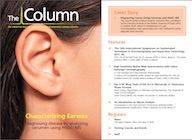Introduction to Glycan Analysis
Glycosylation is the most common monoclonal antibody (mAb) post‑translational modification. What is essential to know about it?
spiral media/stock.adobe.com

Glycosylation is the most common monoclonal antibody (mAb) postâtranslational modification. What is essential to know about it?
Glycosylation is the most common monoclonal antibody (mAb) postâtranslational modification. It can affect the safety, halfâlife, and efficacy of mAbs. For example, fucosylation has a direct, negative impact on the overall efficacy of a mAb, by means of a reduction in its ability to perform antibodyâdependent cellular cytotoxicity (ADCC), whereas the addition of N-acetylneuramic acid (NANA) generates acidic residues, and typically leads to an immunogenic response.
Glycosylation occurs in two types, O- and N-linked. O-linked glycans are attached through an oxygen atom on a serine (Ser) or threonine (Thr) residue. This type of glycosylation is rare in human or murine immunoglobulin G (IgG) proteins. N-glycosylation can occur whenever the following consensus sequences occur: AsnâXXX-Ser or Asn-XXX-Thr (where XXX is any amino acid, except for proline [Pro]). The N-glycosylation site in mAbs is on Asnâ297 in the fragment crystallizable (Fc) region. Glycan structure in mAbs can be highly heterogeneous, varying widely between different cell lines, clones, and production conditions. Therefore, it is important to be able to accurately characterize mAb glycoforms, including during biosimilar development.
Reversed-Phase HPLC Analysis
At the peptide level, reversed-phase high performance liquid chromatography (HPLC) analysis of the differing glycoforms produces a chromatogram in which the glycoforms are represented as several unresolved peaks, rather than a single peak. Further examination of this peak cluster allows fine details relating to the glycosylation profile to be extracted. It is worth noting that, even though reversedâphase LC is not an ideal technique for glycan separation, its high resolving power permits partial resolution of some isomers, and, at the peptide level, a near full approximation of the glycoprofile can be observed. As expected, an increase in the number of polar glycan units reduces retention in reversed-phase LC.
HILIC Analysis
Hydrophilic interaction liquid chromatography (HILIC) is particularly applicable to the analysis of glycans, due to their highly polar nature. Typically, glycans are enzymatically released from the mAb, labelled with a fluorotag (2-aminobenzamide [2-AB] or procainamide), and then analyzed via a HILIC separation followed by fluorescence detection. It should be noted that 2-AB and procainamide are both chromotags and fluorotags, indicating that they can be used in conjunction with UV and fluorescence detection. However, fluorescence detection adds the benefit of increased sensitivity, due to fewer compounds fluorescing. When employing mass spectrometric (MS) detection, as is often the case during development and characterization, one may be tempted to forego the labelling step, as the unlabelled glycans readily ionize in negative mode electrospray ionization via the numerous terminal hydroxyl groups. However, performing the labelling is always recommended, as the unlabelled or free glycan can exist in two anomeric forms, an alpha and a beta, and this can lead to peak splitting. The benefits of labelling glycans is not merely from a detection perspective; the labelled glycans are also more easily retained and separated.
MS Analysis
Mass spectrometry is a powerful tool for the characterization of glycoproteins, and is often used in conjunction with other methodologies to allow full characterization. Glycosylation can be studied at both the intact protein and peptide levels, with MS methods employed depending on the information required and the known properties of the molecules. Intact antibodies or antibody fragments can be rapidly screened using electrospray ionization-quadrupole time-of-flight mass spectrometry (ESI-QTOF-MS) instruments. The high resolution and extended mass range of these instruments allow glycan distribution, relative quantitation of specific glycoforms, and the degree of glycosylation to be assessed. Detection of major glycoforms is routinely performed; however, analysis of minor glycoforms is still challenging at the intact protein level.
Analysis of glycosylation at the peptide level provides information such as glycosylation site and site-specific distribution of different glycoforms when multiple glycosylation sites are present. This approach also allows analysis of peptide sequences and other postâtranslational modifications. If glycosylation occurs at other sites other than the Fc region site, specific glycoforms can be analyzed at the glycopeptide level. Antigenâbinding fragments (Fab) and Fc-specific glycan profiles can also be analyzed at the antibody fragment or released glycan level.
ESI and matrix-assisted laser desorption–ionization (MALDI)-MS are both employed for profiling and structural characterization of glycans. A common phenomenon in MALDI is the loss of sialic acids; however, this can be avoided by permethylation or carboxyl group derivatization. ESIâMS of glycans is either carried out using an infusion or coupled to a separation technique, such as HILIC or capillary zone electrophoresis (CZE).
More Online Find this, and other webcasts, at: www.chromacademy.com/Essentials

Determining the Effects of ‘Quantitative Marinating’ on Crayfish Meat with HS-GC-IMS
April 30th 2025A novel method called quantitative marinating (QM) was developed to reduce industrial waste during the processing of crayfish meat, with the taste, flavor, and aroma of crayfish meat processed by various techniques investigated. Headspace-gas chromatography-ion mobility spectrometry (HS-GC-IMS) was used to determine volatile compounds of meat examined.

.png&w=3840&q=75)

.png&w=3840&q=75)



.png&w=3840&q=75)



.png&w=3840&q=75)










